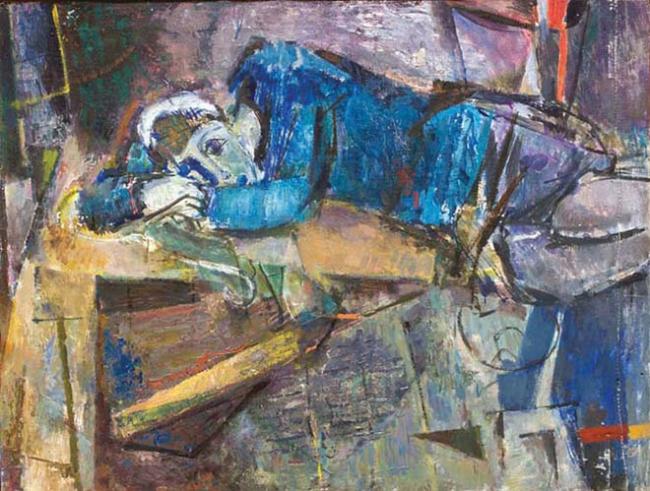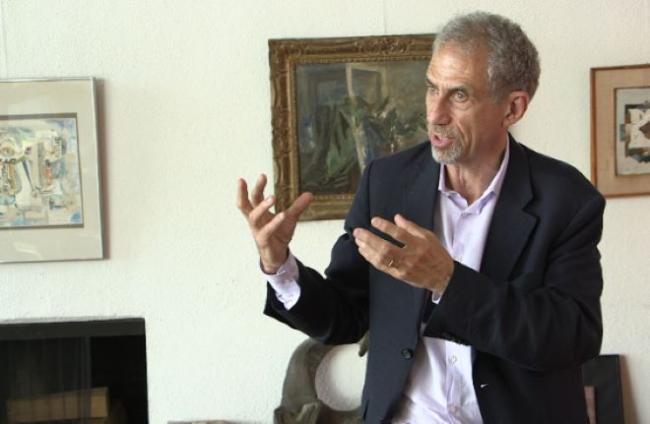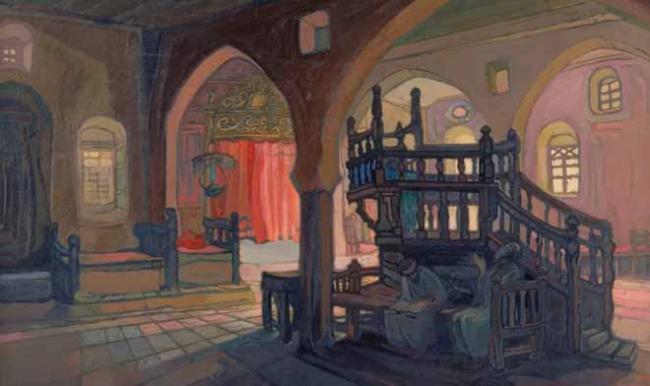Weekly Reader Ukraine's Artistic Legacy
March 20, 2022
During the course of Russia’s war on Ukraine it has become clear that the victims include not just the country’s military, infrastructure, or even its civilian population but its cultural heritage as well. You may have seen photos of Odesa residents piling sandbags around the statue of the Duc de Richelieu, who was the city’s governor in the early 19th century. On a more tragic note, last week Russia bombed the Drama Theater in Mariupol', which was serving as a shelter to some of the city’s residents, including children. While we hope for more encouraging news, let’s take a minute to appreciate Ukraine’s artistic legacy—including, of course, its Jewish artists.
—Ezra Glinter
Under Siege

Painter, teacher, and stage designer Felix Samoilovich Lembersky was born in 1913 in Berdychiv and studied art in Kyiv, first at the Jewish Arts and Trades School and Kyiv Art Institute and then at the Leningrad Academy of Art, where he finished his thesis during the Siege of Leningrad. In this episode of The Shmooze podcast, Joel Berkowitz, director of the Sam and Helen Stahl Center for Jewish Studies at the University of Wisconsin-Milwaukee, describes how Lembersky resisted state-imposed strictures during the Soviet era to follow his own artistic inclinations—at great personal cost.
Listen to a podcast about Felix Lembersky
On Stage

Boris Aronson was born in 1898 in Kyiv and immigrated to the United States in 1923, where he became a celebrated set designer for the Yiddish theater and Broadway, winning a Tony Award for scenic design six times. Some of his more noted productions include Fiddler on the Roof, Cabaret, Zorba, Company, Follies, and A Little Night Music. In this oral history interview his son, Marc Aronson, talks about his father’s involvement in the art world in Europe, including his participation in the Yiddish Kultur Lige in Kyiv, his work on a book about Chagall, and his involvement in the cabaret world in Berlin.
Watch an oral history interview about Boris Aronson
Master Illustrator

Saul Raskin was born in 1878 in Prymors'k, studied lithography in Odesa, and immigrated to the United States around 1904, where he became a cartoonist and caricaturist for the Yiddish press. Over time his work became nearly ubiquitous: he wrote travelogues, art books, and even a mystical novel, the evocatively titled An oysgetrakhter emes (An Invented Truth). Many other books bear his mark in some form—his typography adorns their covers, and his illustrations add life to their pages.
